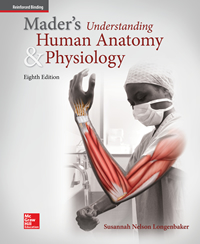1 A) gases. B) liquids. C) elements. D) solids. 2 A) carbon, hydrogen, sodium and nitrogen B) carbon, hydrogen, oxygen and nitrogen C) oxygen, hydrogen, iron and calcium D) sodium, iron, calcium and oxygen 3 A) chlorine B) nitrogen C) oxygen D) sodium 4 A) calcium B) phosphorous C) potassium D) sodium 5 A) atom. B) gas. C) molecule. D) isotope. 6 A) protons and electron B) electrons and neutrons C) positrons and electrons D) protons and neutrons 7 A) electron B) proton C) nucleus D) neutron 8 A) electron B) proton C) nucleus D) neutron 9 A) 24 B) 12 C) 8 D) 10 10 A) 6 B) 9 C) 12 D) 18 11 A) 7 B) 14 C) 21 D) 49 12 A) protons B) neutrons C) electrons D) protons and neutrons 13 A) protons B) electrons C) neutrons D) ions 14 A) innermost: 6 B) outermost: 8 C) innermost: 2 D) outermost: 2 15 A) sterilizing medical and dental products B) sterilizing the U.S. mail C) killing cancer cells D) radioactive tracers 16 A) Isotope B) Geiger C) Tracer D) Neutrons 17 A) molecule B) electron C) attraction D) inorganic matter 18 A) reactions B) ions C) compound D) molecule 19 A) isotope formation, ionization B) the sharing of electrons, the attraction between opposite charges C) positive charges, negative charges D) inorganic attractions, organic attractions 20 A) electrons B) neutrons C) protons D) electrons or neutrons 21 A) 2 electrons B) 2 pairs of electrons C) 2 neutrons D) 2 pairs of neutrons 22 A) carbon dioxide B) oxygen C) water D) nitrogen monoxide 23 A) Hydrogen bond B) Ionic bond C) Non-polar covalent bond D) Polar covalent bond 24 A) Hydrogen bond B) Ionic bond C) Non-polar covalent bond D) Polar covalent bond 25 A) Covalently bonded B) A polar molecule C) Inorganic D) An ionic compound 26 A) It can absorb only small quantities of heat without heating up. B) It can dissolve most polar and ionic compounds. C) It's molecules are cohesive, yet they flow. D) It has a high heat of vaporization. 27 A) adhesion B) cohesion C) vaporization D) ionization 28 A) Hydrogen bond B) Ionic bond C) Non-polar covalent bond D) Polar covalent bond 29 A) Non-polar molecules only B) Polar molecules only C) Non-polar molecules and ions D) Polar molecules and ions 30 A) acidic. B) basic. C) neutral. 31 A) acidic. B) basic. C) neutral. 32 A) acid. B) base. C) buffer. D) isotope. 33 A) releases hydrogen ions B) accepts hydrogen ions C) maintains a stable pH D) neutralizes a solution 34 A) acids B) bases C) hydrogen ions D) sodium ions 35 A) acid. B) base. C) buffer. D) isotope. 36 A) hydrogen; decreases B) hydrogen; increases C) sodium; decreases D) sodium; increases 37 A) electrolyte. B) isotope. C) carbohydrate. D) lipid. 38 A) 2.2 B) 6.8 C) 7.0 D) 7.4 39 A) greater than 7.0 B) less than 7.0 C) greater than 7.45 D) less than 7.35 40 A) carbohydrates, electrolytes, lipids and water B) electrolytes, lipids, proteins and water C) carbohydrates, lipids, nucleic acids and proteins D) electrolytes, proteins, nucleic acids and water 41 A) buffers B) macromolecules C) monomers D) monosaccharides 42 A) Carbohydrates B) Lipids C) Nucleic acids D) Proteins 43 A) Amino acids B) Fatty acids and glycerol C) Monosaccharides D) Nucleotides 44 A) amino acids B) deoxyribonucleic acid C) fatty acids D) glucose 45 A) a polysaccharide B) two amino acids C) two monosaccharides D) two nucleotides 46 A) glycogen B) lactose C) sucrose D) fructose 47 A) cellulose B) starch C) sucrose D) glycogen 48 A) carbohydrates B) lipids C) nucleic acids D) proteins 49 A) cellulose B) starch C) sucrose D) glycogen 50 A) carbohydrates B) lipids C) nucleic acids D) proteins 51 A) cellulose B) starch C) maltose D) glycogen 52 A) yellow; white B) solids; liquids C) liquids; solids D) white; yellow 53 A) insulate against heat loss B) provide long-term energy storage C) form part of the cell membrane D) provide genetic information 54 A) glycogen B) steroids C) triglycerides D) phospholipids 55 A) cholesterol B) fatty acids C) phospholipids D) polysaccharides 56 A) Amino acids B) Fats C) Phospholipids D) Steroids 57 A) dipeptide B) disaccharide C) polypeptide D) protein 58 A) forming antibodies B) allowing movement C) forming enzymes D) creating energy 59 A) forming hormones B) forming monosaccharides C) forming transport molecules D) forming hair and nails 60 A) nucleic acids. B) amino acids. C) fatty acids. D) glycerol. 61 A) 10 B) 12 C) 20 D) 24 62 A) quaternary B) tertiary C) secondary D) primary 63 A) primary B) tertiary C) quaternary D) secondary 64 A) denaturation. B) radiation. C) saturation. D) unsaturation. 65 A) acids B) buffers C) enzymes D) genes 66 A) decreasing pH B) 2 increasing pH C) 3 decreasing energy of activation D) increasing energy of activation 67 A) degradation. B) replacement C) synthesis D) decomposition 68 A) synthesis. B) degradation. C) composition. D) replacement. 69 A) synthesis. B) degradation. C) decomposition. D) replacement. 70 A) pentose sugar B) phosphate group C) nitrogen-containing base D) amino acid 71 A) alternating sugar and phosphate. B) complementary base pairs. C) alternating uracil and phosphate. D) none of the above. 72 A) uracil. B) thymine. C) cytosine. D) guanine. 73 A) double helix. B) double circle. C) straight strand. D) none of the above. 74 A) carbohydrates. B) lipids. C) proteins. D) cholesterol. 75 A) ATP. B) DNA. C) RNA. D) glucose. 76 A) 26 B) 30 C) 36 D) 50





